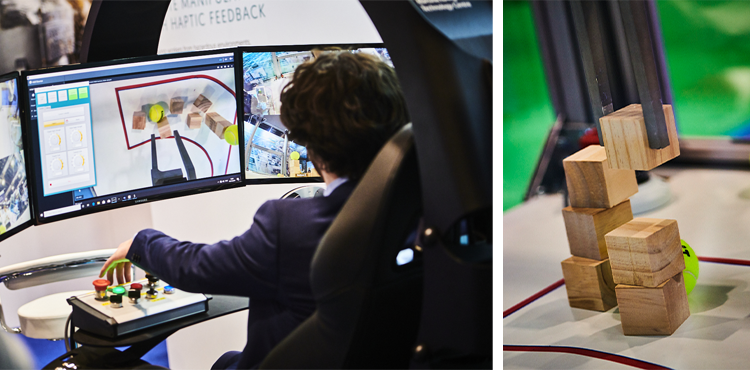
The MTC has worked in collaboration with the nuclear industry on a novel remote handling demonstrator, which brings together a range of innovative technology.
The technologies utilised on the project can improve the safety of operations in hazardous environments, with the potential to remove the need for traditional manual glove box processes.
Many industrial sectors, including the nuclear industry, are facing the challenge of manual labour-intensive operations in hazardous environments. Operators are often required to wear full respiratory systems and can only work for a very limited time, with some operations being too dangerous for human intervention. The development of scalable, human-controlled robotic applications, with immersive control has the potential to significantly increase the safety of potentially unsafe processes, and improve productivity.
Working together with the nuclear industry, the MTC has developed a teleoperated robotic handling demonstrator, deployed in a glove box mock-up.
Intuitive operator controls rely on multiple camera feeds and haptic control allows the user to feel grasping forces and the interaction between the robot and environment or assets.
A virtual training simulator mode utilises the same control interface as the real system and provides a platform for operators to be trained in a de-risked, virtual environment.

Evaluated and demonstrated the successful use of haptic teleoperation in hazardous and confined environments.
Performed a comprehensive series of tests to evaluate different operator interface and control methods.
Designed as a cost-effective option for industry that can be embedded into mature, bespoke configurations.
A scalable solution that enables a wide range of operations in different processes from handling, to more complex assembly processes.
This project has the potential to be embedded into an automated, or autonomous process due to its human shared autonomy.
Innovative technology that can aid with future development and deployment, and can be further de-risked into an industrial application.
Operators can perform complex operations from a safe, remote location.
Using a de-risked virtual simulator, operators can receive training on new processes and environments.
With a transferable capability, the technology knowledge and future development roadmap can be exploited when considering future development.
This project has the potential to transform current processes, significantly improve safety, and increase productivity.